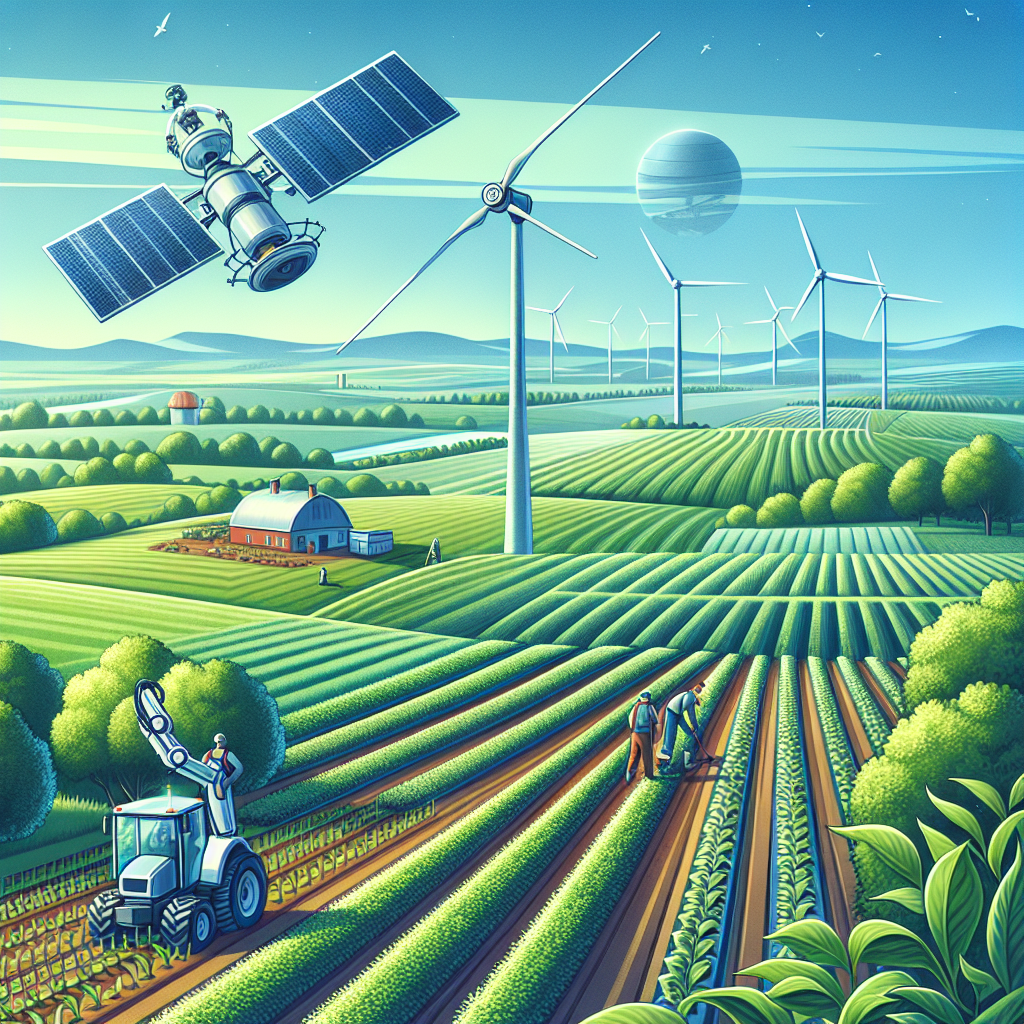Artificial intelligence (AI) development in agriculture is revolutionizing the way farmers work and increasing efficiency in sustainable farming practices. With the global population expected to reach 9.7 billion by 2050, the demand for food is ever-increasing. This puts pressure on farmers to produce more food while also ensuring sustainable practices to protect the environment. AI technology offers solutions to these challenges by providing farmers with tools to optimize crop production, reduce waste, and make informed decisions based on data-driven insights.
AI in agriculture encompasses a wide range of technologies, including machine learning, computer vision, and robotics. These tools can be used to monitor crop health, predict weather patterns, manage pests and diseases, and automate farming tasks. By analyzing data collected from sensors, drones, and satellites, AI algorithms can provide farmers with real-time information on crop conditions, soil health, and irrigation needs. This allows farmers to make timely decisions to maximize crop yield and minimize environmental impact.
One of the key benefits of AI in agriculture is its ability to improve resource efficiency. By using AI-powered sensors and monitoring systems, farmers can optimize water usage, reduce fertilizer and pesticide use, and minimize waste. This not only reduces costs for farmers but also helps to protect the environment by minimizing the impact of agriculture on water resources and soil health. AI can also help farmers adopt more sustainable practices, such as precision agriculture, which involves using data-driven insights to tailor farming practices to specific field conditions.
Another important application of AI in agriculture is in crop monitoring and management. AI algorithms can analyze satellite imagery and drone data to detect crop diseases, pests, and nutrient deficiencies. By identifying these issues early, farmers can take proactive measures to protect their crops and prevent yield losses. AI can also help farmers optimize planting schedules, crop rotations, and harvesting techniques to maximize yield and quality.
AI technology is also being used in livestock farming to improve animal health, optimize feeding schedules, and monitor behavior. By using AI-powered sensors and monitoring systems, farmers can track the health and well-being of their animals in real-time, allowing them to detect and address any issues before they become serious. This not only improves animal welfare but also helps farmers increase productivity and profitability.
In addition to improving efficiency and productivity, AI technology in agriculture can also help farmers reduce their environmental footprint. By using AI algorithms to optimize farming practices, farmers can minimize the use of chemical inputs, reduce greenhouse gas emissions, and promote biodiversity on their farms. AI can also help farmers adapt to the challenges of climate change by providing them with tools to make data-driven decisions in response to changing weather patterns and extreme events.
Despite the numerous benefits of AI development in agriculture, there are also challenges and limitations to consider. One of the main challenges is the cost of implementing AI technology on farms, which can be prohibitive for small-scale farmers. Additionally, there are concerns about data privacy and security, as well as the ethical implications of using AI to make decisions that affect the environment and livelihoods of farmers.
To address these challenges, governments, businesses, and research institutions are working to develop AI solutions that are affordable, accessible, and ethical. By investing in research and development, training programs, and infrastructure, stakeholders can help farmers adopt AI technology and benefit from its potential to improve sustainable farming practices.
In conclusion, AI development in agriculture is transforming the way farmers work and helping to improve sustainable farming practices. By providing farmers with tools to optimize crop production, reduce waste, and make informed decisions based on data-driven insights, AI technology is revolutionizing the agriculture industry. With the global population expected to continue growing, the demand for food is increasing, putting pressure on farmers to produce more while also protecting the environment. AI offers solutions to these challenges by improving resource efficiency, crop monitoring, livestock management, and environmental sustainability. By investing in AI technology and supporting farmers in adopting it, stakeholders can help to ensure a more sustainable and productive future for agriculture.
FAQs
1. What is AI development in agriculture?
AI development in agriculture refers to the use of artificial intelligence technologies, such as machine learning, computer vision, and robotics, to improve farming practices. AI can be used to monitor crop health, predict weather patterns, manage pests and diseases, and automate farming tasks.
2. How does AI help farmers in sustainable farming practices?
AI helps farmers in sustainable farming practices by providing tools to optimize crop production, reduce waste, and make informed decisions based on data-driven insights. By using AI-powered sensors and monitoring systems, farmers can optimize water usage, reduce fertilizer and pesticide use, and minimize waste.
3. What are the benefits of AI in agriculture?
The benefits of AI in agriculture include improved resource efficiency, crop monitoring, livestock management, and environmental sustainability. AI technology can help farmers increase productivity, reduce costs, and minimize environmental impact.
4. What are the challenges of AI development in agriculture?
Challenges of AI development in agriculture include the cost of implementing AI technology on farms, data privacy and security concerns, and ethical implications of using AI to make decisions that affect the environment and livelihoods of farmers.
5. How can stakeholders support AI development in agriculture?
Stakeholders can support AI development in agriculture by investing in research and development, training programs, and infrastructure to help farmers adopt AI technology. By working together, stakeholders can help to ensure a more sustainable and productive future for agriculture.

